
THIS: 209

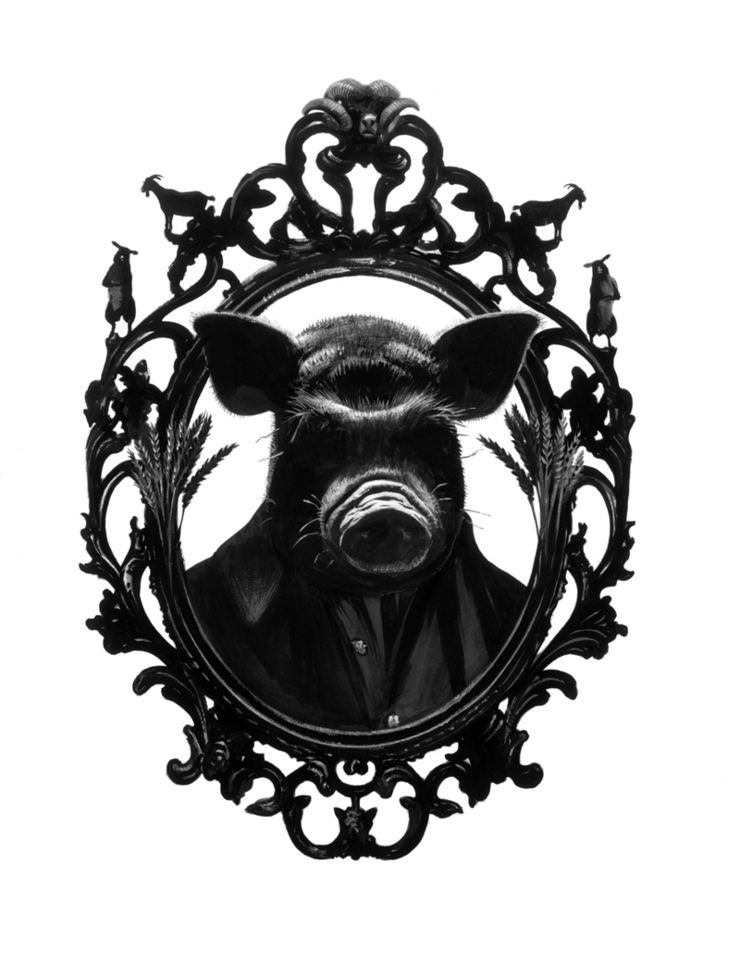
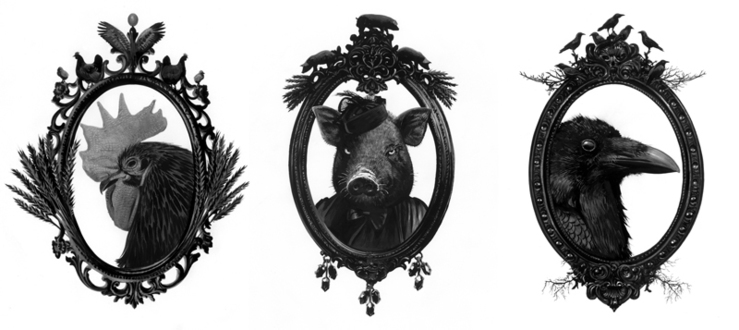
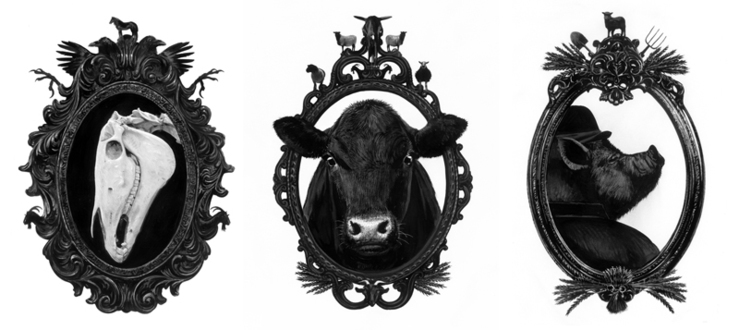
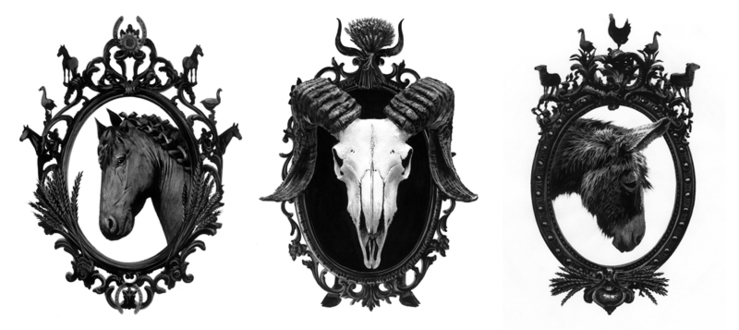

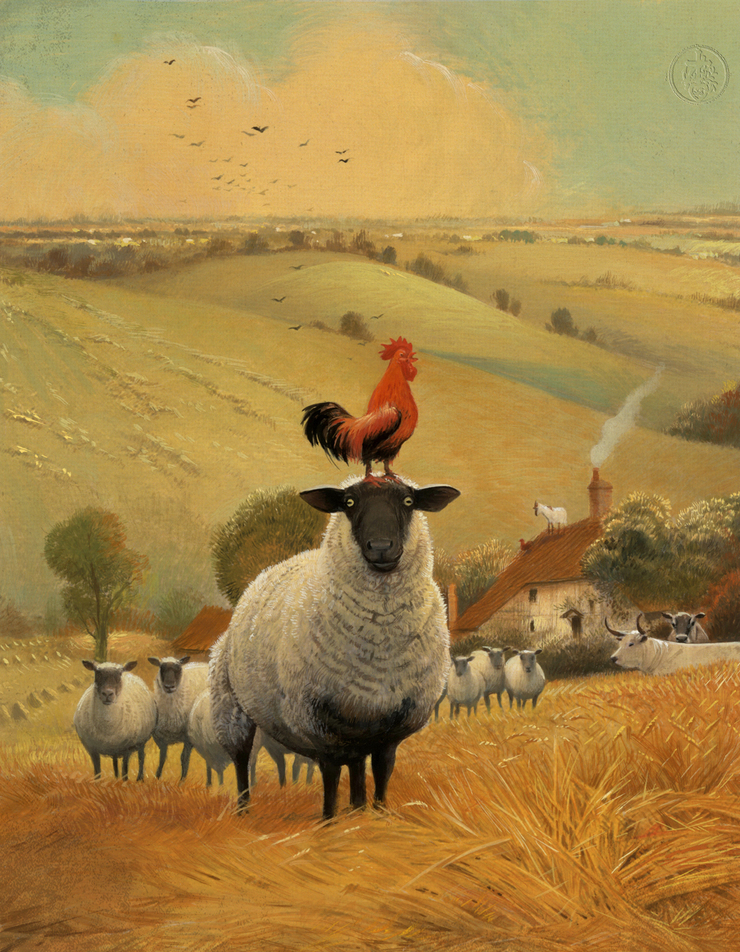
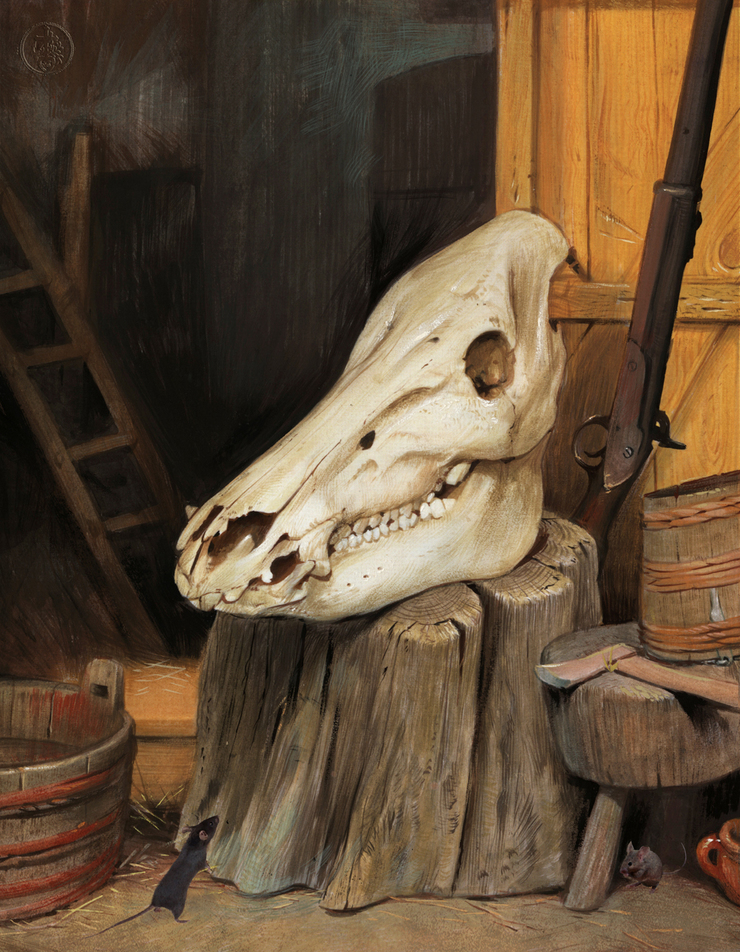

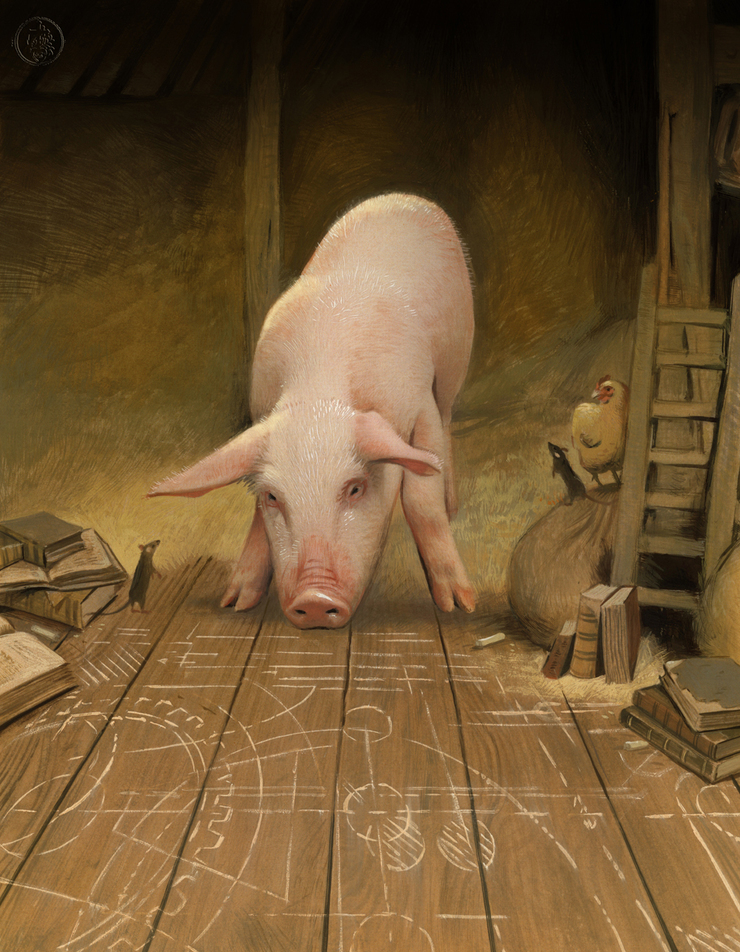
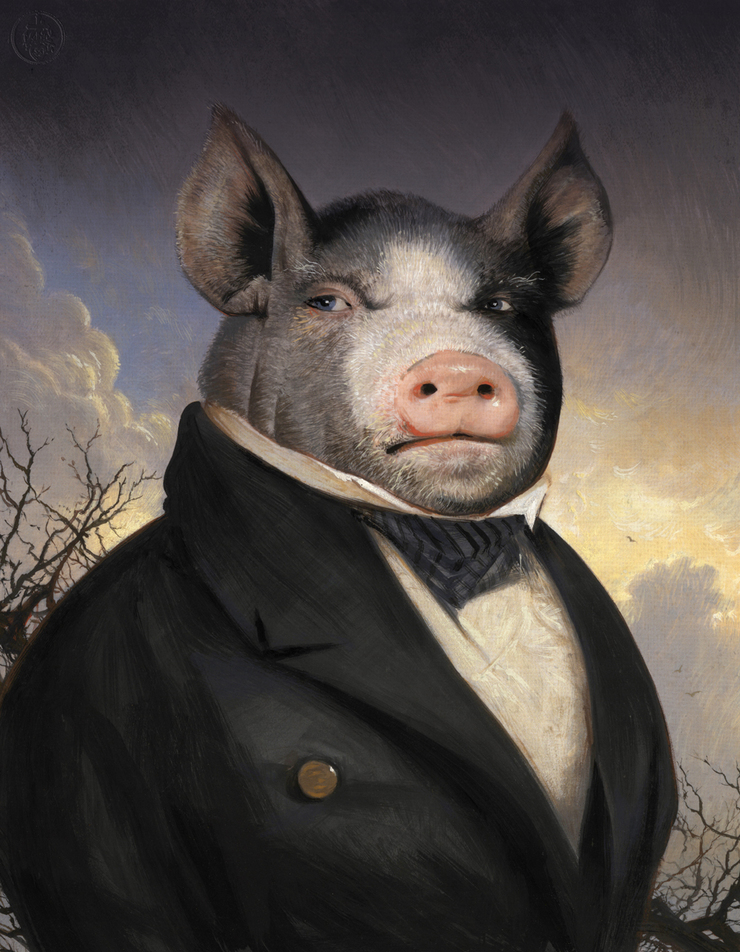
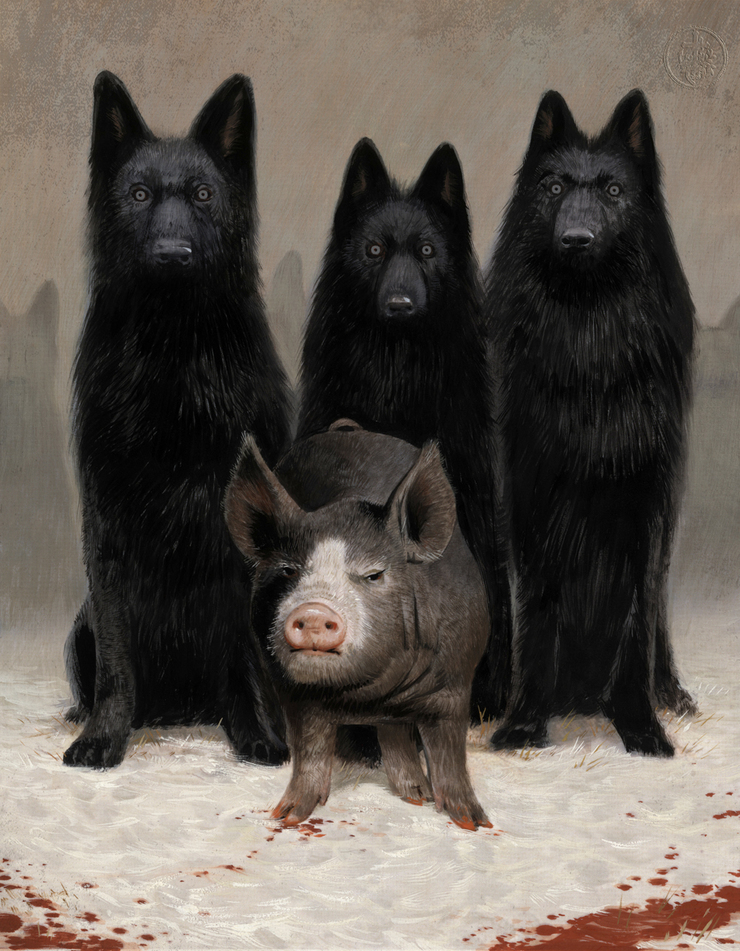
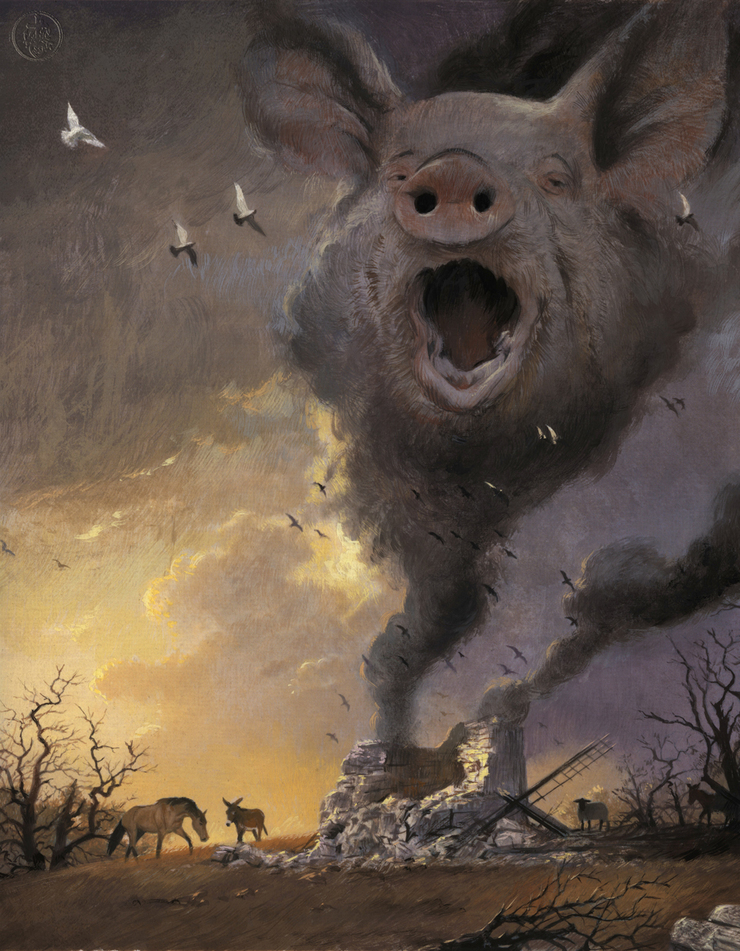
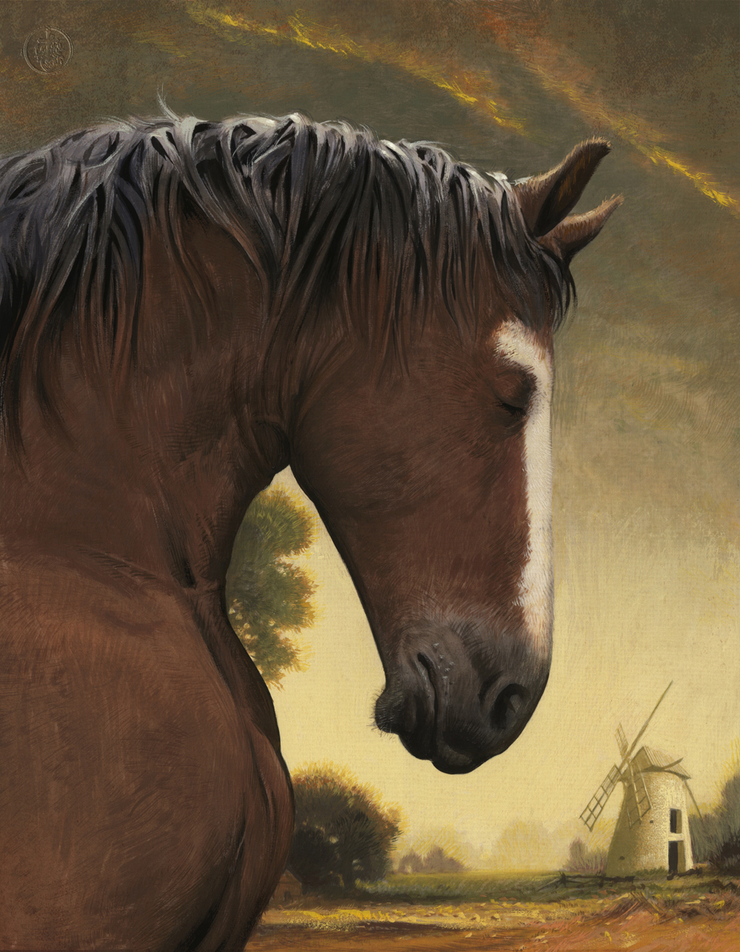
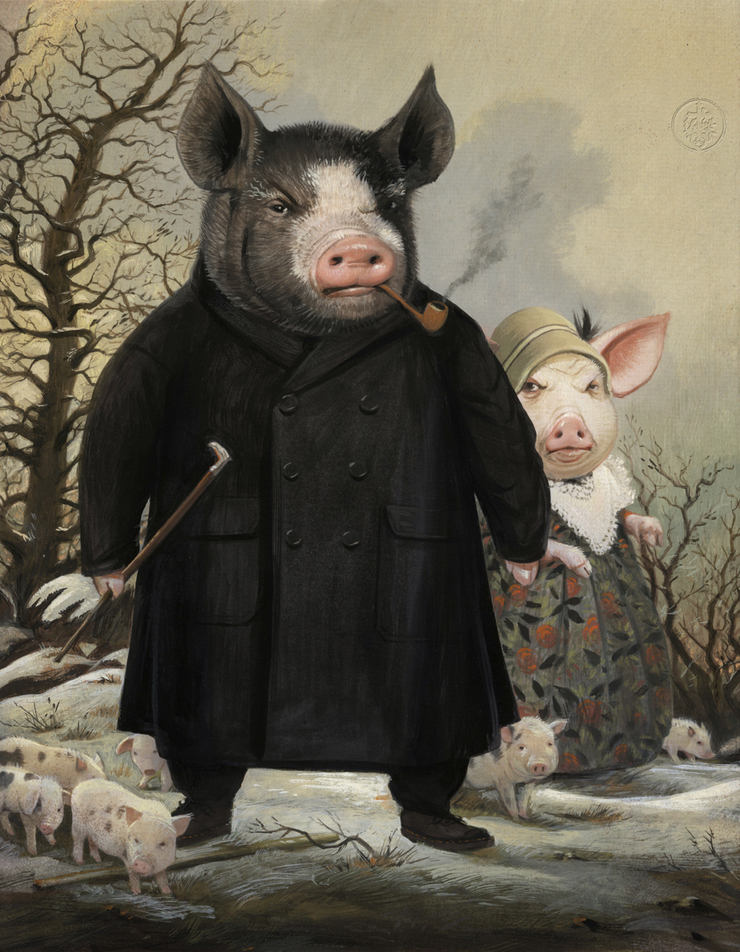

George Orwell's Animal Farm
June 5, 2017


Toward the end of last year I had a great opportunity to work on one of my favorite books, George Orwell’s Animal Farm, for Easton Press. I have to admit, I hadn’t read it… I know, such a classic… When I talked to Lee about it, she said she read it when she was a kid, and to her it was just a really sad story about a horse... Okay, I'll read it....
I wanted to make my own visuals, not based on anything; on anyone elses interpetation. After I read it I kind of agreed. it was a really sad story about a horse. But it also had some resounding parallels with modern day politics. I chose to keep the story as close to the actual descriptions of characters and scenes. I didn’t feel it was just a manifesto about communism, fascism…
Certainly as I worked through the visuals I tried to research each animal as far as breed and appearance, as Orwell had meant them to be. (Napoleon was a Berkshire Boar, while Snowball was a Middle White, a british landbreed)
From Wikipedia: Animal Farm is an allegorical novella by George Orwell, first published in England on 17 August 1945. According to Orwell, the book reflects events leading up to the Russian Revolution of 1917 and then on into the Stalinist era of the Soviet Union. Orwell, a democratic socialist, was a critic of Joseph Stalin and hostile to Moscow-directed Stalinism, an attitude that was critically shaped by his experiences during the Spanish Civil War. The Soviet Union, he believed, had become a brutal dictatorship, built upon a cult of personality and enforced by a reign of terror.
Orwell described Animal Farm as a satirical tale against Stalin, he wrote that Animal Farm was the first book in which he tried, with full consciousness of what he was doing, "to fuse political purpose and artistic purpose into one whole".



Forest acted as my editor in trying to help me stay on target with the text and descriptions of scenes. I ended up doing 10 color illustrations and 10 chapter heads as well. Can’t wait to see the finished books, so far we have only seen a mock up for advertising. There will be a limited 1,200 copies available through Easton Press. All signed and beautifully embellished gold and leather covers.The illustrations will be hand-mounted into the book as they were in the limited first editions of Rackham and Dulac from the early 1900s.
Many thanks to Easton Press and art director Michael Hendricks.










